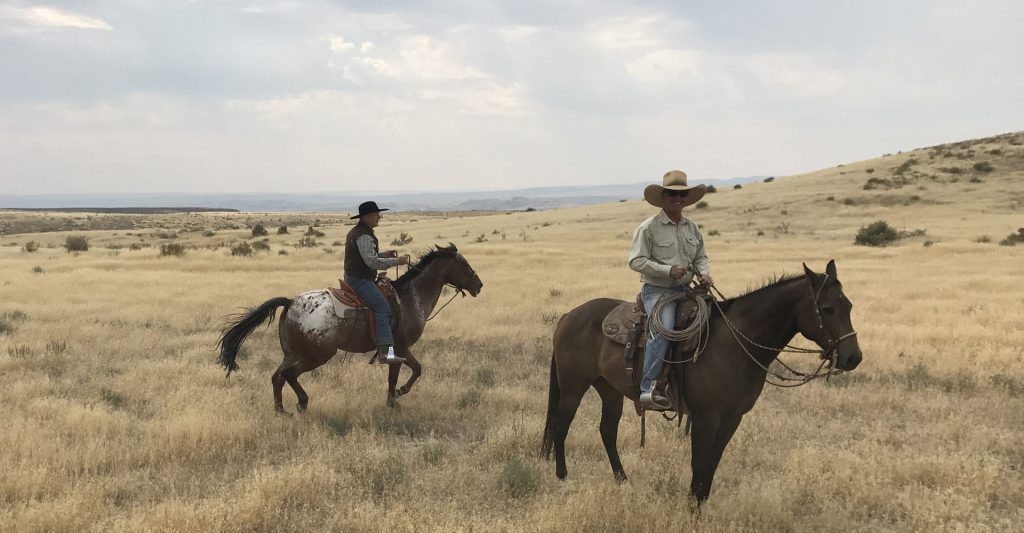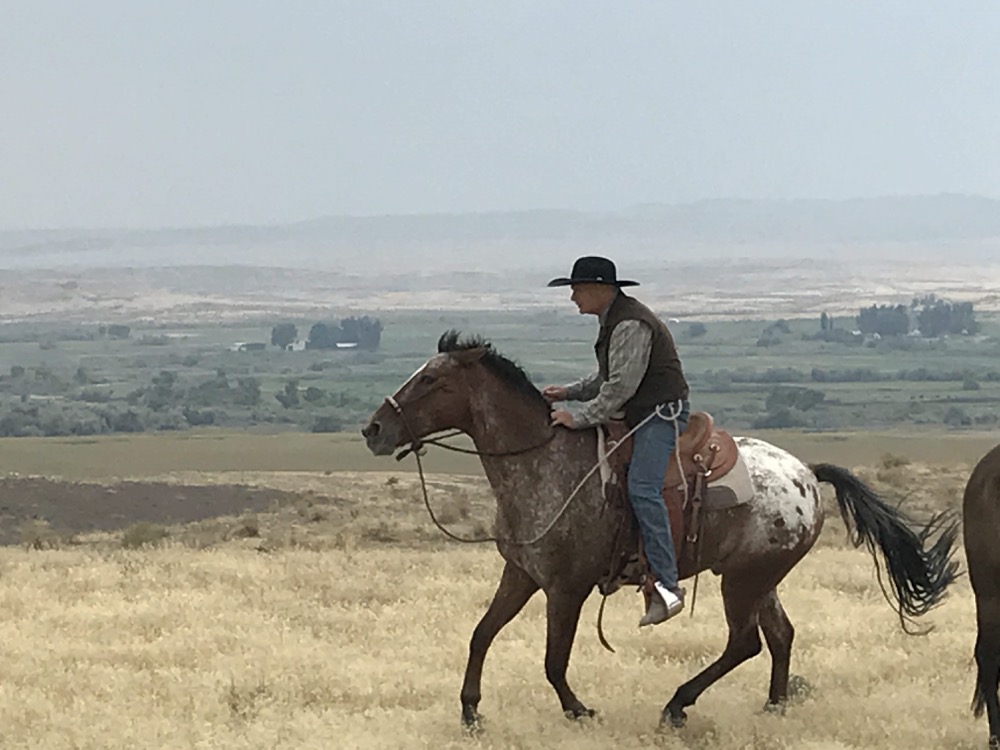Vaquero is a Spanish word that meaning “cowboy”. The Spanish Vaqueros, cowboys, were the precursors of the modern American cowboys of the Southwest. The name Vaquero, pronounced “bah care roh”, as with many other Spanish words, was bastardised in translation. The American enunciation is “Buckaroo” and it is often used interchangeably.
The first Vaqueros came to work in the mission system raising cattle for the Holy See in New Spain (Mexico, California, etc.). They bought with them exceptional horsemanship skills which were further honed and developed in the laid back open ranges of the American Southwest. The original Vaqueros would have used a system not unlike Doma Vaquera, the traditional Spanish and Portuguese dressage schools of horse training. Some of those early training methods would undoubtedly be shunned by the modern American Buckaroo who has refined and evolved the system to become far more considerate of the horse.

The Vaquero, working cattle in Spain and Portugal, used a garocha, a blunt lance, to prod and motivate cattle. But in America they developed a riata, rawhide rope with a easy slip noose, which could more readily be carried on horseback and had more versatile uses. Today the riata is more commonly known as a lasso. Although the origins of the Vaquero are intrinsically tied to working cattle from horseback the skills that were developed and passed on make for a much better trained horse. Today many of the cowboys practicing this tradition look down on those just following the art for the sake of making a better horse.
The snobbery is evident in a variety of ways including looking down on users of snaffle bits and just about anything but a Jaquima and a spade bit. The Jaquima is made up of three parts; 1. a traditional braided rawhide noseband, called a bosal; 2. a mecate, or twenty-two-foot rein traditionally made from braided horse mane hair; and 3. a hanger, which is thin piece of leather preventing the bosal from falling off the horse’s nose. A spade bit is a large bit that rests comfortably, despite its size, in the horse’s mouth and is used as a signal bit. The spade bit also encourages proper head carriage. The cowboys also believe that the art is more than mere horsemanship, it extends to handling and managing cattle on the open range.
This type of cowboying is vastly different from the modern sports of chasing and roping cattle in confined arenas. If a cowboy went after cattle on the range in the same way that recreational or sport riders do they would be spending a lot of time rounding them back up.
Nonetheless, the art of the Vaquero, it is an art that can be learned by anyone with a will to learn and the patience to study and practice. For many years the art had been kept alive and passed down almost literally from father to son. But thanks to the likes of modern day Vaqueros such as Tom and Bill Dorrance, Ray Hunt, Martin Black and Buck Brannaman the art became known to outsiders, people who did not work on the western ranches.
The movies “The Horse Whisperer” and “Buck” also opened a window into the world of the Vaquero allowing many more equestrian aficionados to be introduced to an alternative method of horsemanship. Through clinics, books and videos awareness of the benefits of these methods has grown tremendously. The art of the Vaquero allows a horse to maintain its vitality and essential nature while being compliant and communicative with its rider in a way that eludes most riders of other disciplines. The look, feel and carriage of a Vaquero horse is altogether different from that of one whose demeanour reflects a slave like compliance with its handler’s bidding.


The Vaquero horse seems to understand almost intuitively, it communicates with and goes with its rider. Few other styles of horsemanship attend so much to the feel, mindfulness and sensitivities of the horse. Other methods generally seek to control and dominate the horse into submission. They often using harsh equipment such as twisted wire snaffle bits, from which there is no relief for the horse along with tie downs, whips, martingales and other pieces of equipment that seek to control through inflicting pain. For the Vaquero such equipment is unnecessary and perhaps cumbersome, if they have done their job properly they can work without it all. After all, a well-trained Vaquero bridle horse can be ridden using a few strands of mane hair attached to a spade bit, that’s how little pressure is required to elicit a correct response.
The Vaquero start horses in the Jaquima, gradually the horses learn to communicate through a light signal and over several years they hopefully graduate to a spade bit and finished bridle horse status. Although a spade bit is a large piece of metal (compared with a snaffle bit) that is inserted into the horse’s mouth it helps the horse to find proper head carriage and will develop a subtle signal by which it can operate, much like power steering in an automobile.
There are a very, very few practitioners of the traditional Vaquero style of horsemanship in Ontario and their presence is not widely known. Most Ontario equestrians have little time for developing the art of horsemanship, they prefer to find horses that are “dead broke” and ready to ride. The most common styles of horsemanship practiced in Ontario are the English and Texan Cowpoke style. Both are based more on control and domination of the horse. Such methods are far harsher than most riders recognize or understand.
Vaquero Ontario is dedicated to promoting the Vaquero art of horsemanship and creating an awareness of the efficacy of the method. Because of the time it takes to properly prepare a horse this is not for everyone, but everyone could benefit – even if in small ways. Whether you train for dressage or barrel racing there are many takeaways that could help you to improve your communication with your horse – if you are prepared to put in the tie it takes.
Some amazing horsemen like Sheila Varian, of California, have already shown how the Vaquero arts can be combined with dressage to develop better, more confident, horses and riders. Regardless of whether you are an absolute beginner, a confident trail rider or an advanced Olympic level equestrian you can benefit from studying the art of the Vaquero.
To join our mailing list for upcoming clinics, seminars, presentations, newsletters and for other Vaquero related information please complete the form on the contact us page.
